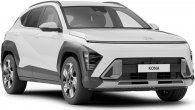Few cars have improved as much over their immediate predecessors as Nissan’s Juke.
Though a 1.5 million-selling global smash hit, the old F15 original bombed in Australia, languishing as a divisive, cramped, noisy, cheaply presented and yet expensive oddball alternative to the Mazda CX-3 and Honda HR-V set that it ironically helped inspire back in 2010.
In contrast, the all-new F16-series is larger, roomier, nicer inside, prettier outside and more practical, as Nissan strives to keep its pioneering city SUV on top of its game.
Can the 2021 Juke turn the tide? We take a long hard look at the bottom end of the range to find out.
Nissan Juke 2020: ST+
| Engine Type | Turbo 3, 1.0L |
|---|---|
| Fuel Type | Premium Unleaded Petrol |
| Fuel Efficiency | 5.8L/100km (combined) |
| Seating | 5 |
| Price From | $20,130 - $25,520 |
| Safety Rating |
|
Does it represent good value for the price? What features does it come with?
If the new Juke wore a Volkswagen rather than Nissan badge, would we cut it some slack for seemingly steep prices?
After all, it kicks off from $27,990 (before on-road costs) for the base ST, and that’s nearly $4000 over Hyundai's dinky Venue Active, nearly $3000 above the ageing Mazda CX-3 Neo Sport and $1000 more than the spanking-new Toyota Yaris Cross auto equivalents.
As the cliché goes, though, there’s more here than meets the eye.
For starters, the Juke is built in the UK primarily for its adoring European market. This fact is evident in the surprisingly pleasing quality finishes found inside, as well as the efficiency-prioritising, small-capacity three-cylinder turbo and dual-clutch transmission powertrain underneath.

So, maybe it’s best and fairest to compare Nissan’s English import with similarly-priced Euros, and autos at that, since no manual is currently offered, sadly.
Let's see... there's the Volkswagen T-Cross 85TSI Life DSG and its Skoda Kamiq 85TSI DSG fraternal twin (both also from $27,990), Ford's box-fresh Puma from $29,990, the new Juke’s coming kissing-cousin Renault Captur II – out soon – that's set to also start from around $30K, the equally all-new and highly-specified Peugeot 2008 Allure 1.2T from $34,990, and even BMW's Mini Countryman Cooper Classic from $44,500.... why not, given it’s also a style-driven Brit.
That’s a motley group of Continental compact crossovers if ever there was one.
Secondly, the ST is far from bare in there, brandishing the urban safety stuff you need (including autonomous emergency braking (AEB) with pedestrian and cyclist detection, lane-departure warning and lane-keep assist, forward collision warning, rear cross-traffic alert, blind-spot warning, traffic-sign recognition, hill-start assist, a reversing camera and rear parking sensors), as well as the good gear you want.
With an 8.0-inch touchscreen offering voice recognition, Apple CarPlay/Android Auto connectivity, CD player (yes!), paddle-shifters, manual air-con, cruise control with speed limiter, a part-digital instrumentation display, electric folding mirrors and 17-inch alloy wheels, even the entry-level Juke seems mid-spec, bar one glaring omission: no wireless smartphone charger – a curious misstep for such a freshly-hatched SUV so obviously targeting techie urbanites.

Still, in contrast, almost all entry-level rivals look or feel stark and sparse inside and out, but not the ST.
Our test car ended up being the $30,740 ST+, so that’s plus digital radio (essential nowadays), plus satellite navigation (less so), plus heated front seats, plus automatic air-con, plus LED foglights and plus front parking sensors – but still minus that wireless charger. Oh well. Collectively, all make the Plus feel comparatively plush for the extra coin. Stepping up to the ST-L and flagship Ti add $3200 and $5750 to our Juke’s price respectively. Premium paint (as per our vehicle) costs another $595.
This is a solid start for the baby Nissan SUV’s quest for Aussie acceptance.
Is there anything interesting about its design?
Is there anything that isn’t interesting going on here?
The old Juke divided critics and buyers alike with its wilfully bold – some unkind folks might even say Jar Jar Binks-like – face, high-hipped stance and pert to-the-point-of-squashed-up proportions. But sell the baby SUV did away from Oz.

Today’s F16 is a far-more mature effort, sitting prettier within its similarly-styled-but-entirely-different skin. The Nissan’s styling has moved away from the fringes, visually connecting to contemporaries, such as the Mazda CX-3 while still maintaining the circular headlight motifs and hidden rear-door handles. And the extra length balances the proportions no end.
Perhaps the most normal part of the design is rear-on, which loses the old car’s ‘Nike Tick’ tail-light style for more-conventional rectangular units. You’d still call the Juke II interesting, though.
How practical is the space inside?
Harbour no doubts. The Juke’s biggest step forward over its predecessor has been inside, with a palpably larger and roomier body moving beyond the more than just cursory ‘2+2’ space for adults stuck in the back seat. And all that without losing the sporty coupe-SUV style that has been so central to the Nissan’s appeal.
Entry and egress are now no-longer hindered by narrow door openings and instead are aided by overhead grab handles for all but the driver’s side. There’s ample legroom and shoulder space for larger bodies up front. The driving position is nigh-on perfect for most people, assisted by a lovely three-spoke wheel (with paddle shifts), excellent ventilation and thoughtful placement of most switchgear and controls. Storage options abound, including a massive glovebox. And the old feeling of cheapness has been confined to the dustbin.

Likewise, the dashboard also represents progress, ditching the old F15’s garish toy-like plastics for something that scores for design, quality and presentation. Large, clear dials flanking a central screen offering an auxiliary digital speedometer, driving data, vehicle settings and multimedia info are a nice touch. It all still looks individualistic like the last one, but without the twee tat. Top stuff.
Actually, there’s very little wrong with the rear-seat as well, thanks to equally wide apertures to help get in and out, comfy cushions, bottle holders in all doors, a mobile phone receptacle and well-sited elbow rests. The backrest angle is acceptably angled, headroom is fine for your 178cm tester, big feet can fit beneath the front seats, and even the centre isn’t purgatory for short trips. Again, for a small SUV, it all works fine.
However, being an ST+, you miss out on a USB charger, while no Juke has a middle folding armrest or adjustable back air vents. While there are bottle holders in the doors, there's nowhere to store a cup unless you stretch forward to use the ones in the centre console beside the front-seat occupants.
Still, the natty Nissan’s rear seat is not the confining and dispiriting cattle-class cabin it once was. There’s even enough light streaming in to avoid it seeming like you’re sat in a black hole, while both windows drop almost all the way down.

As far as luggage space goes, the littlest Nissan SUV pulls another rabbit out of the hat, being deep and wide and very useful, though beware the high loading lip. Cargo area measures in at 422 litres (up from 354L), rising to 1305L with the rear backrests dropped. A space-saver spare lives beneath the flat floor, but note that there is no bridging false floor for a completely flush load area to the rear of the front seats when the split/fold backrests are not erect.
The fit and finish back there is also up to expectations, while we experienced no rattles or broken trim during our fortnight with the ST+.
So far, so very good then.
What are the key stats for the engine and transmission?
Right now, only the Renault-Nissan HR10DDT 999cc 1.0-litre direct-injection in-line three-cylinder turbo petrol is available, driving the front wheels via a seven-speed dual-clutch transmission (DCT). Engine outputs are 84kW at 5250rpm and 180Nm at 2400rpm – with power being somewhat down against the 85kW/200Nm T-Cross, 92kW/170Nm Puma and 110kW/195Nm CX-3.
Supplied by German transmission specialists Getrag, it is set-up with short lower ratios for intended lively acceleration and longer higher ratios that prioritise economy and efficiency. Higher-spec Juke models like the ST-L and Ti also feature a Drive Mode Selector, offering Sport/Standard/Eco settings. This is worth remembering.

A warbly though solidly punchy little powerplant that revels in a rev, the HR10DDT is actually related to the larger engines found in some smaller Mercedes-Benz models like the A200.
Some markets also have a choice of a six-speed manual gearbox but, like we said, Australia is denied such a pleasure.
How much fuel does it consume?
Averaging an official 5.8L/100km, Nissan reckons the Juke is one of Australia’s most fuel-efficient SUVs, and it certainly seems tuned for economy rather than performance in its present stake. Up to 800km between refills can be expected.
Over a period of several weeks, ours managed an average of 7.5L/100km according to the trip computer, which is pretty impressive given how enthusiastically – and at times hard even – it was driven.
Note that the Juke requires at least 95 RON premium unleaded petrol – another giveaway of its European heritage.
Warranty & Safety Rating
What safety equipment is fitted? What safety rating?
The ST+ includes anti-lock brakes with electronic brake-force distribution and brake-assist, stability and traction controls, AEB with pedestrian and cyclist detection, forward collision warning, lane-keep alert and assist, blind-spot alert, rear cross-traffic alert, driver attention alert, six airbags, a reverse camera, front and rear parking sensors, auto high beam headlights, Traffic Sign Recognition and an Active Speed Limiter with the standard cruise-control system.

There are also two rear-seat ISOFIX points as well as three top tethers for straps behind their backrests.
The Juke scored a five-star ANCAP crash-test rating, based on the Euro NCAP result achieved in 2019.
ANCAP states that the Juke’s AEB works between 5km/h and 200km/h.
What does it cost to own? What warranty is offered?
Nissan offers an industry-average five-year/unlimited kilometre warranty and roadside assistance.
Intervals are every year or 20,000km, while published basic capped-price servicing is available for 15 years or 300,000km! Their prices vary in the first five years, from $310 to $520, with a big one (as with most new vehicles) at six years/72,000km ($1544).
Among other things, that first-year service includes a system-wide computer scan, recall campaign check, road test, oil/filter change and inspections for wheels, wipers, fluids, windscreen, lighting, locks/hinges/latches, warning lights/chimes, brakes, rear demister, air cleaner filter, DCT oil leaks, hoses and lines, ventilation system, engine belts, battery/alternator charge state, brake booster, power steering, steering linkages, fuel lines/connections and exhaust.
Like most other new vehicles, then.
What's it like to drive around town?
If you’ve read this far down, you’re probably wondering if the reborn Juke in ST+ guise is THE small SUV buy of the 2020s. Distinctive, spacious, comfortable, practical, safe and strong value. So, where’s the catch?
Here's where things get complicated for a car we actually like quite a lot.
Turn the key, and the thrummy little three-pot turbo growls into life, promising hungry, healthy performance. But pulling the lever into Drive and flexing your right foot down on the accelerator is met with a hesitation, that turns into a yawning delay unless you really push down hard. In the following drawn-out order, the revs rise, the turbo kicks in and the Juke then suddenly jolts into action, like it’s been stabbed with a shot of adrenalin in the heart.
There is no way around this nothing-then-boom acceleration unless you pay more for an ST-L or Ti with Drive Mode Select, which features a Sport setting that seems to shorten the lag between pedal-pushing and engine-response. Even using the standard paddle shifters to drop down a few ratios seems to take forever for the DCT to react, making us wish the company would at least offer us Europe’s default manual alternative to speed things along.

Making things worse is that the previous F15 Juke never suffered from such maladies. If anything, some versions – like the fiery 140kW/240Nm 1.6-litre turbo AWD – arguably offered too much muscle.
We’re sorry Nissan, this economy-minded tuning might be acceptable in Europe, where every millilitre of petrol saved assists with some type of a tax break, but in Australia, the resulting performance procrastination, followed by jerky progression, is annoying in stop/start traffic, frustrating when a fast getaway is expected and even terrifying if you only have seconds to join or cross speeding motorway traffic.
Our advice is to take a Juke for an extended test over your usual driving route to see if any heavy traffic, hills or merging elicit off-the-line delays. If they don’t or you don’t care either way, then enjoy the littlest Nissan SUV’s many urban-motoring plus-points.
For example, the ST+’s performance really hits its stride once the engine is spinning and the car is on the move, pulling away quickly and with plenty of torquey punch for spirited overtaking and lively fast cruising. In these scenarios, the Juke feels as eager as most other rivals.

There’s also a neat balance between steering effort and response, for easy round-town manoeuvrability (making it a cinch to park) as well as accurate and controlled handling when you venture beyond the suburban limits.
And the grip from the Hankook 215/60R17 tyres helps with secure roadholding in both wet and dry conditions. The suspension does a fine job keeping most bumps and thumps out, as well as road and tyre drone from coming in.
A world away from the previous iteration, it’s true that the Juke possesses a high degree of dynamic finesse and sophistication that’s often missing in similarly affordable SUVs. It’s just such a shame there isn’t the low-speed engine response that the rest of the car deserves.
Verdict
The latest Juke impresses on so many important levels that the ST+ ought to be at the top of every small SUV shopping list. Nissan’s done a terrific job turning its one-time enfant terrible into a cultured and mature alternative to a Mazda CX-3.
But the 1.0-litre turbo’s laggy and jerky behaviour can infuriate driver and passengers alike with frustrating, heartbreaking regularity, blinding them – as it nearly did us – to the progress that the new model has made over old.
As a result, Nissan’s job isn’t quite done. Please find a fix or a more responsive engine for the otherwise charming and capable Juke, and fast.
Pricing Guides




.jpg)






.jpg)








.png)








.jpg)

.jpg)

.jpg)


.jpg)



.jpg)
Comments